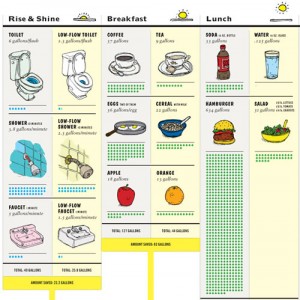I know that this is really random, but my uncle re-did the SAS office in Toronto and I thought it was pretty cool. Everything is super sustainable, all businesses should be doing things like these. Sustainable business shouldn’t always have to be what you sell to your customers or how you market yourself, it should be the impact that you are making on the community around you.
SAS Canada wins recognition for environmental leadership
City of Toronto honours SAS as runner up for the Green Toronto Award for Energy Conservation, and Maclean’smagazine names SAS one of Canada’s Greenest Employers
Toronto (Apr. 24, 2009) – SAS Canada, the leader in business analytics, has been honoured for its initiatives in environmental sustainability by both the City of Toronto and Maclean’s magazine.
The City of Toronto named SAS as runner up for the 2009 Green Toronto Award for Energy Conservation at a public ceremony on April 23, held at the Direct Energy Centre in Exhibition Place. In 2008, the SAS Canada building consumed 62% less energy than the equivalent typical Ontario office building.
“When we broke ground on our headquarters in 2005 we didn’t set out to build Canada’s first LEED-certified newly constructed commercial office building – our goal was to build the best working environment for our staff and tenants, and to integrate into the community,” said Carl Farrell, Executive Vice President, SAS Americas. “But we are an employee-driven culture and green initiatives are an important priority for our staff; so it was common sense for us to take a leadership role in reducing our environmental footprint.”
It is this eco-conscious corporate culture that also compelled Canada’s national news magazine, Maclean’s, to name SAS one of Canada’s Greenest Employers for 2009. The special designation recognizes employers that lead the nation in making environmental values part of their organization’s culture. SAS was selected on the strengths of its LEED-certified Toronto headquarters, as well as sustainability policies such as providing filtered drinking water instead of bottled water; providing plates, cutlery, mugs and glasses to discourage the use of disposable items; and donating used laptops and personal computers to schools and charitable organizations.
SAS Canada headquarters facts
- LEED Silver certification: the SAS building is the first new commercial office building in Canada to be certified LEED Silver. The building meets LEED Canada’s five criteria for environmentally innovative building methods – Sustainable Site, Water Efficiency, Energy & Atmosphere, Materials & Resources and Indoor Environmental Quality.
- Rainwater harvesting system: collects more than one million litres of water each year for toilet and urinal flushing, and landscaping purposes; reduces load on city sewer system and demand for municipal potable water; low-flow hands-free washroom fixtures prevent waste.
- Reduced energy consumption and intensity (electricity and natural gas): SAS Canada building used 62% less energy per square metre in 2008 than a typical Ontario office building – 269 Kilowatt hours per square meter per year versus the average Ontario office building’s 719 Kilowatt hours per square meter per year; the Building Automation System allows constant monitoring to identify and resolve excess energy uses, and implement load-shedding strategies to operate only the devices necessary.
- Reduced heat island effect: heat reflective roof reduces ambient temperature in the immediate neighbourhood, and within the building.
- Lighting: floor-to-ceiling windows on south and west sides allow optimal levels of interior daylight and a three-storey high atrium topped with a skylight admits additional daylight into the interior top three floors. Low E glass coatings reduce amount of heat entering through windows while allowing 95% of light through. Indirect lighting uses 30% less energy and distributes up to 50% more light than typical overhead fixtures. Totally indirect overhead lighting means no computer screen glare or lighting “hotspots”; lighting uses T5HO light tubes (highest efficiency/lowest CO2 emissions) versus T12 or T8 fluorescent tubes.
- Air quality: under-floor air distribution saves cooling energy and adds enhanced comfort through improved air quality; workspaces equipped with manually adjustable floor air diffusers; ultra-efficient air filtering (95%) ensures optimal air quality; all materials used in building construction and interior design are low-VOC (i.e. emit little or no volatile organic compounds, toxins or odours).
- Recyclable materials content: carpet tiles are made from more than 90% recycled content and are 100% recyclable; almost all office chairs are 100% recyclable and were made in a factory powered by wind-generated electricity; building structure is made of concrete with a high percentage of recycled material which can be recycled at its end of life.
- Recycling program: all desks and workspaces are supplied with normal waste and recycling bins. The collected building waste is further sorted into three streams by contracted staff before entering the external waste stream. The SAS Building diverts more than 85% of its generated waste from landfills; all SAS printers are set to default double-side printing to reduce paper use.
- Kitchen areas: SAS supplies reusable cups, plates and utensils to eliminate paper or plastic waste; serveries on each floor are equipped with chilled and filtered water from special faucets rather than bottled water.
- Transportation: 9 transit routes within ¼ mile of building; free employee shuttle bus to Union Station during morning and evening rush hours; secure indoor bicycle storage and shower/changing facilities.
